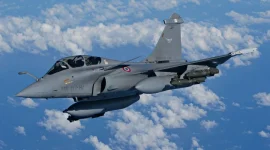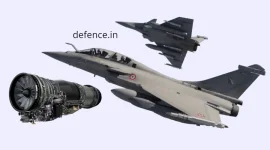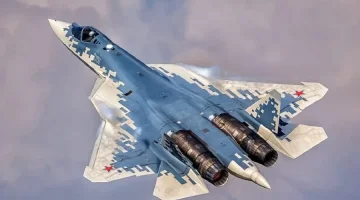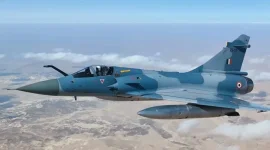- Views: 8K
- Replies: 47
India's strategic plan to modernise its aerial combat fleet is at a pivotal moment, with new considerations potentially altering a major aircraft acquisition deal.
The prospects for French aerospace giant Dassault Aviation to secure a full order for 114 Rafale fighter jets under the Multi-Role Fighter Aircraft (MRFA) tender appear to be shrinking as the Indian Air Force (IAF) increasingly considers acquiring next-generation stealth fighters.
This potential shift in India's defence procurement strategy, which could involve purchasing two to three squadrons of 5th-generation jets, may lead to the original Rafale order being cut by as much as half.
Such a decision would reflect India's evolving military priorities and its goal of maintaining a technological edge in a complex regional security environment, significantly impacting the estimated $10–14 billion Rafale contract.
The MRFA tender is a critical initiative designed to address the IAF's declining squadron strength and replace its aging fleets of MiG-21, MiG-27, and Jaguar aircraft.
Dassault's Rafale, a 4.5-generation multirole fighter, has been a strong contender, partly because India already has a positive operational history with the aircraft.
The IAF currently operates 36 Rafales from a 2016 deal, and the Indian Navy has committed to purchasing 26 marine versions of the jet. This familiarity, combined with the Rafale's advanced avionics and established maintenance infrastructure in India, has given Dassault a notable advantage.
However, the path to a full 114-jet deal is complicated by significant challenges, including the high cost of the aircraft and questions about Dassault's ability to meet production timelines.
The 2016 deal valued each Rafale at a high price point, and Dassault's global production capacity is already strained with orders from nations like Indonesia, the UAE, and Serbia.
Fulfilling a large Indian order would likely require setting up a new assembly line in India under the 'Make in India' policy, adding further cost and complexity.
The primary factor disrupting the MRFA tender is the advent of 5th-generation stealth fighters, such as the American-made Lockheed Martin F-35 and India's own indigenous Advanced Medium Combat Aircraft (AMCA) currently under development.
These aircraft offer superior capabilities, including low-observable stealth technology, advanced sensor fusion, and network-centric warfare systems that represent a generational leap over 4.5-generation jets like the Rafale.
While the F-35 has a proven combat record, the AMCA project, led by DRDO and HAL, is central to India's long-term goal of self-reliance in defence manufacturing, with a targeted induction in the mid-2030s.
Acquiring 36 to 54 of these advanced stealth fighters would directly address the IAF's strategic need to counter the growing air power of regional adversaries. China is expanding its fleet of J-20 and J-35 stealth fighters, and Pakistan is also expected to acquire modern fighter jets.
The stealth capabilities of 5th-generation aircraft are essential for penetrating heavily defended airspace protected by sophisticated surface-to-air missile systems, such as the S-400, which both China and India operate.
Should the IAF prioritise the purchase of stealth fighters, budgetary realities would likely force a reduction in the Rafale order to approximately 55-60 aircraft.
The IAF's budget must also cover other vital programmes, including the indigenous Tejas Mk1A and Mk2 fighters and naval acquisitions. A smaller Rafale purchase would free up significant funds for a 5th-generation platform while still providing a capable multirole aircraft for various combat scenarios.
For Dassault Aviation, a 50% reduction in the order would represent a major financial setback, cutting potential revenue from over $10 billion to between $5 and $7 billion. It would also affect the company’s industrial plans for India.
For India, this move would signify a decisive strategic shift. Opting for the F-35 would deepen defence cooperation with the United States, building on recent agreements like the deal for GE to co-produce F414 engines in India.
Conversely, prioritising the AMCA would be a landmark achievement for India’s "Atmanirbhar Bharat" initiative, though it would mean waiting longer for a homegrown stealth solution.




